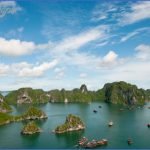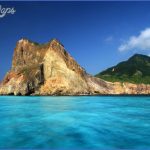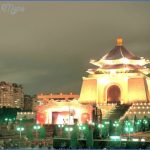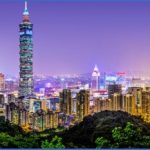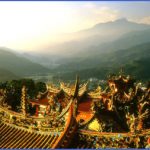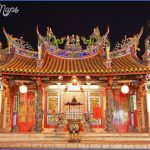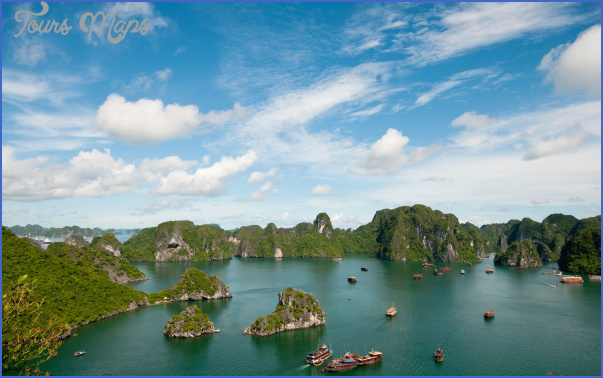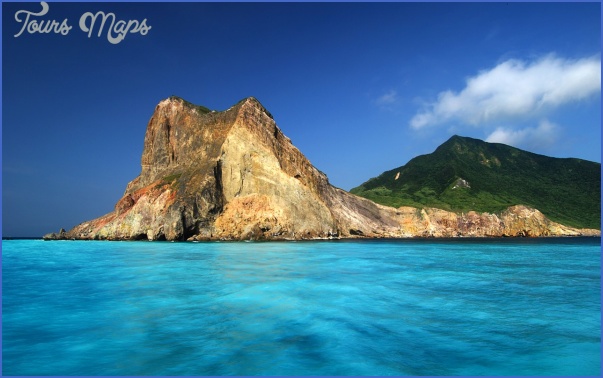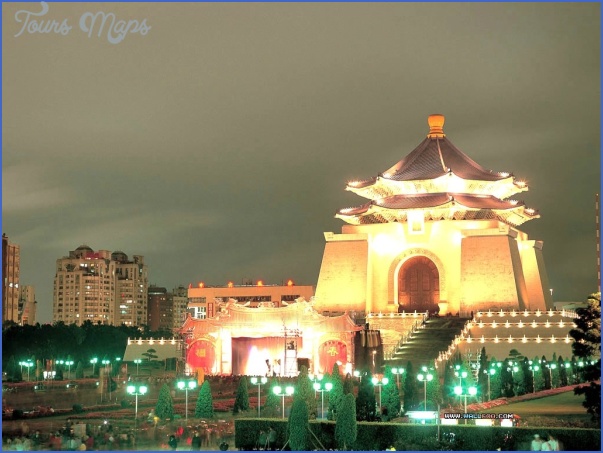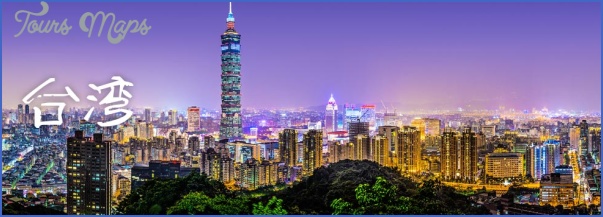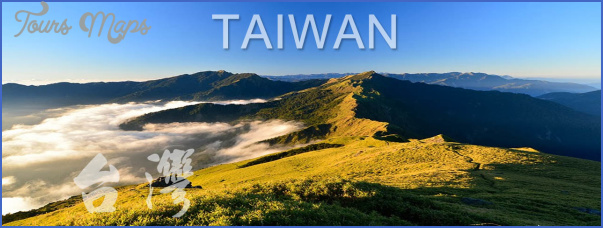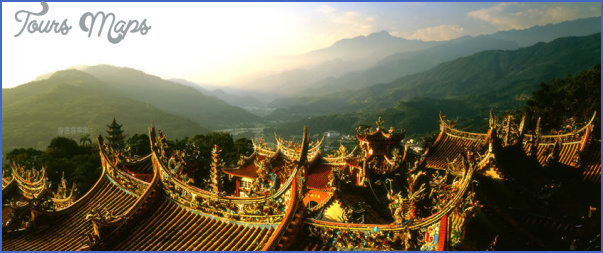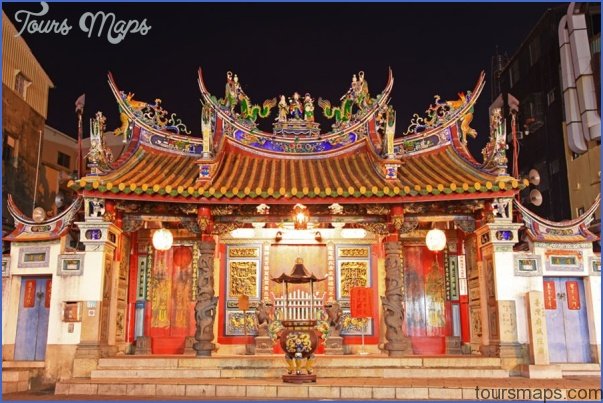The nearby Tapeng Academy of Chinese Opera is one of the best educational establishments of its kind on Taiwan and has already produced a number of star performers. Here even young children take very demanding singing courses or undergo strenuous gymnastic training.
To the north, on the far side of the Keelung river and beyond the imposing Grand Hotel, the visitor will find the impressive Shrine ofthe Martyrs ofthe National Revolution.
On the way to the National Palace Museum (see below) the visitor will pass the Chinese Culture and Film Centre. The buildings of this small complex are in the styles of various dynasties; Chinese feature films are shown here.
In the midst of the thickly-wooded hills ofthe suburb of Waishuanghsi lies the world-famous National Palace Museum. The building itself is most impressive, with its crescent-shaped archways and colourfully glazed bricks and tiles. Inside are housed treasures beyond compare. The most valuable items comefrom an imperial collection started in the 12th c. These precious objects were brought here from Nanking (Nanjing) in 1948. Because of lack of space only about 11,000 of the many hundreds of thousands of objets d’art can be displayed at any one time; the exhibits are changed every three months. The remainder are stored behind thick steel doors deep down in catacombs below the museum. However, those which are on display are impressive enough – Tang and Sung paintings, jade carvings, exquisite Ming porcelain, calligraphy, bronze-work up to 3000 years old, objects decorated in enamel and delicate filigree, lacquer-work, rare books and documents, tapestries and toys once played with by the Manchu emperors when they were children.
The many charms of Yangmingshan National Park, 15km/9 miles north of the capital, attract large numbers of visitors, especially in spring when the cherry-trees and azaleas are in bloom. Rock-gardens and pavilions by the side of pools give it a unique character. There are several hotels with thermal baths. Many of Taipei’s more well-to-do inhabitants live hereabouts.
The road from Taipei to the town of Peitou to the north-west is home to a number of potteries and stoneware factories. At the “China Arts Pottery Co.” pottery can be purchased and the individual stages of ceramic manufacture observed.
On the far side of Peitou lies the fishing port of Tamsui, on the northern side of the river of the same name. At one time Tamsui was a flourishing harbour town, as evidenced by the lavish fagades of the beautiful brick buildings of which many have survived. There are a number of good fish restaurants. Just outside the town lies a splendid golf-course.
High above the mouth of the river towers the old fort of Santo Domingo (Red Fort); built by the Spaniards in 1628 and latertaken over by the Dutch, it is encircled by red walls which have resulted in its popular name of “Hung Mao Cheng”, or “Fort of the Red Barbarians”. Now empty, the fort was occupied by the British consulate until 1972.
On the far side of the river mouth towers the strangely-shaped Mount Kuamyin-shan (612m/2008ft). It is named after the Goddess of Compassion, whose face is said to be discernible in the rock.
The holiday resort of Pitan, 14km/9 miles south of Taipei, is very popular with the people of Taiwan. The Green Lake has facilities for bathing and boat-trips.
Near Mucha, a suburb of Taipei, one of Asia’s largest zoos has come into being. Animals from all over the world enjoy greatest possible degree of freedom here.
After passing through Mucha, the Chihnan Temple will be found 16km/ 10 miles south-east of Taipei. It is also known as the “Temple of the Eight Immortals” or “Temple ofthe Thousand (actually 1275!) Steps. The Chinese believe that worshippers who spend the night here receive divine revelations from Lu Tung-pin in the form of dreams.
Taiwan Travel Photo Gallery
Maybe You Like Them Too
- The Best Cities To Visit in The World
- World’s 10 Best Places To Visit
- Coolest Countries in the World to Visit
- Travel to Santorini, Greece
- Map of Barbados – Holiday in Barbados

